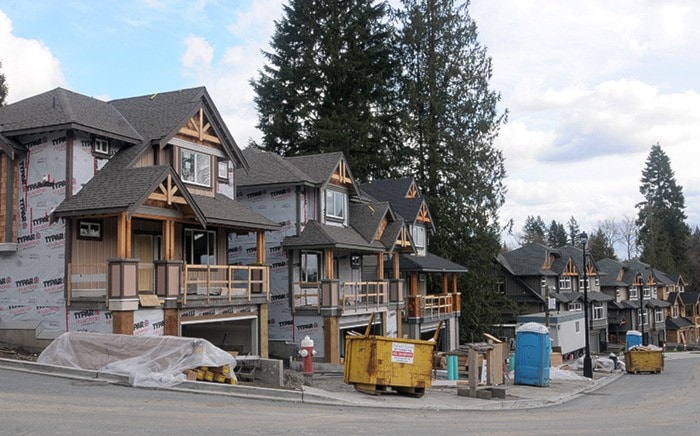Maple Ridge can try to bury the remaining five per cent of the power lines in new areas, but it will cost a pretty penny to do so.
Manager of infrastructure development Stephen Judd told council on Nov. 4 that 95 per cent of the new suburbs in Silver Valley, Cottonwood and Albion will have underground wiring. The exceptions are the major power networks that distribute the power and which follow roads such as 232nd Street or Fern Crescent.
However, to bury even small sections of those lines, costs thousands of dollars.
For example, to bury a 140-metre stretch of cable in Silver Valley would cost $560,000.
A recent project in Fort Langley that required burying of half a kilometre of powerline cost $3 million.
In Albion, there’s a 40-metre stretch of overhead wire that would cost $160,000.
In the older areas of Maple Ridge, such as west of downtown, some areas have buried wires and some don’t. But new developments must have a buried connection to the main power line. That eliminates the power lines that connect homes and condos to overhead powerlines.
In the downtown, back alleys provide most connections to powerlines, while there are no aerial connections to new properties.
Coun. Michael Morden said B.C. Hydro gets the benefit of the developer burying the lines, through lower maintenance costs.
The power company should help pay if the district buries more lines, he added.
Coun. Al Hogarth, though, wanted to know if there’s a way of expanding underground wiring in the downtown area, and to the west, as new projects get built, pointing out fire crews can’t fight a fire if power to nearby wires isn’t cut.
Electrical shorts from overhead wiring can cause fires during an earthquake, he added.
Coun. Cheryl Ashlie didn’t want to drive up costs and said she was OK with the current policy for underground wiring, which says new subdivisions have underground wiring, while infill developments in older areas must have underground connections to the overhead power lines.
